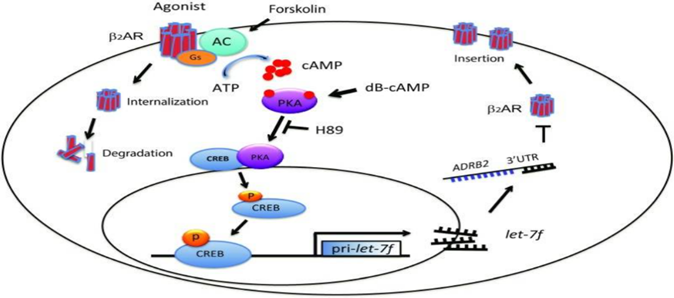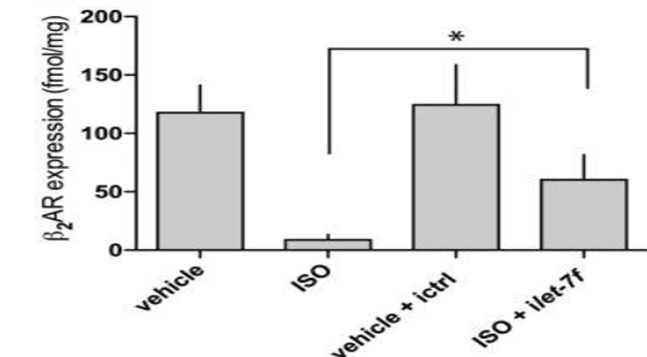Advantages
- Discovered a new mechanism responsible for ∼50% of the β agonist-promoted down-regulation of β2Ars.
- Let-7f miRNA reduces β2-adrenergic receptor (β2AR) downregulation in airway smooth muscle cells.
- Targets microRNA let-7f to mitigate β-agonist-induced tachyphylaxis and improve efficacy in asthma and COPD treatments.
- Offers a novel therapeutic option for achieving sustained bronchodilation.
Summary
Agonists to β2-adrenergic receptors (β2Ars), often termed “β-agonists,” are the primary therapy for acute reversal of airway narrowing in asthma and chronic obstructive pulmonary disease (COPD). β-agonists function by promoting β2Ars-mediated bronchodilation. However, prolonged use of β-agonists can lead to tachyphylaxis, a phenomenon where the drug's effectiveness diminishes over time, necessitating the development of new strategies to maintain therapeutic efficacy and improve patient outcomes. Current approaches to managing β2AR downregulation and tachyphylaxis face significant challenges, including receptor desensitization, phosphorylation, internalization, and degradation.
Our Researcher has identified a mechanism responsible for agonist-promoted downregulation of β2AR. The mechanism involves the small, noncoding microRNA let-7f, which increases with extended β-agonist exposure and suppresses translation of the gene encoding the β2AR, adrenoreceptor β2 (ADRB2). They developed a method of administering let-7f miRNA inhibitors capable of reducing the downregulation of β2AR, thereby targeting the adverse effects of prolonged β-agonist treatment. Adjunct therapy with β-agonists and let-7f miRNA inhibitors may be a new therapy approach to sustain bronchodilation for asthma and COPD patients.

β2AR downregulation by CREB-mediated/let-7f processes in HASM. HASM cells express β2AR at a stable level when receptor production and degradation are at equilibrium. Upon agonist activation of β2AR, intracellular cAMP levels increase due to receptor-Gs coupling. cAMP activates PKA, which in turn activates the CREB transcription factor, which binds to the promoter of pri-let-7f, increasing expression of let-7f. let-7f binds to the 3'UTR of ADRB2 and represses translation, contributing to agonist-promoted long-term downregulation of β2AR. Another mechanism of downregulation that is apparent in HASM is the degradation of β-arrestin mediated internalized receptors.

Knockdown of let-7f attenuates down-regulation of β2AR in HASM cells (n = 6 experiments) *P < 0.01.
Desired Partnerships
- License
- Sponsored Research
- Co-Development